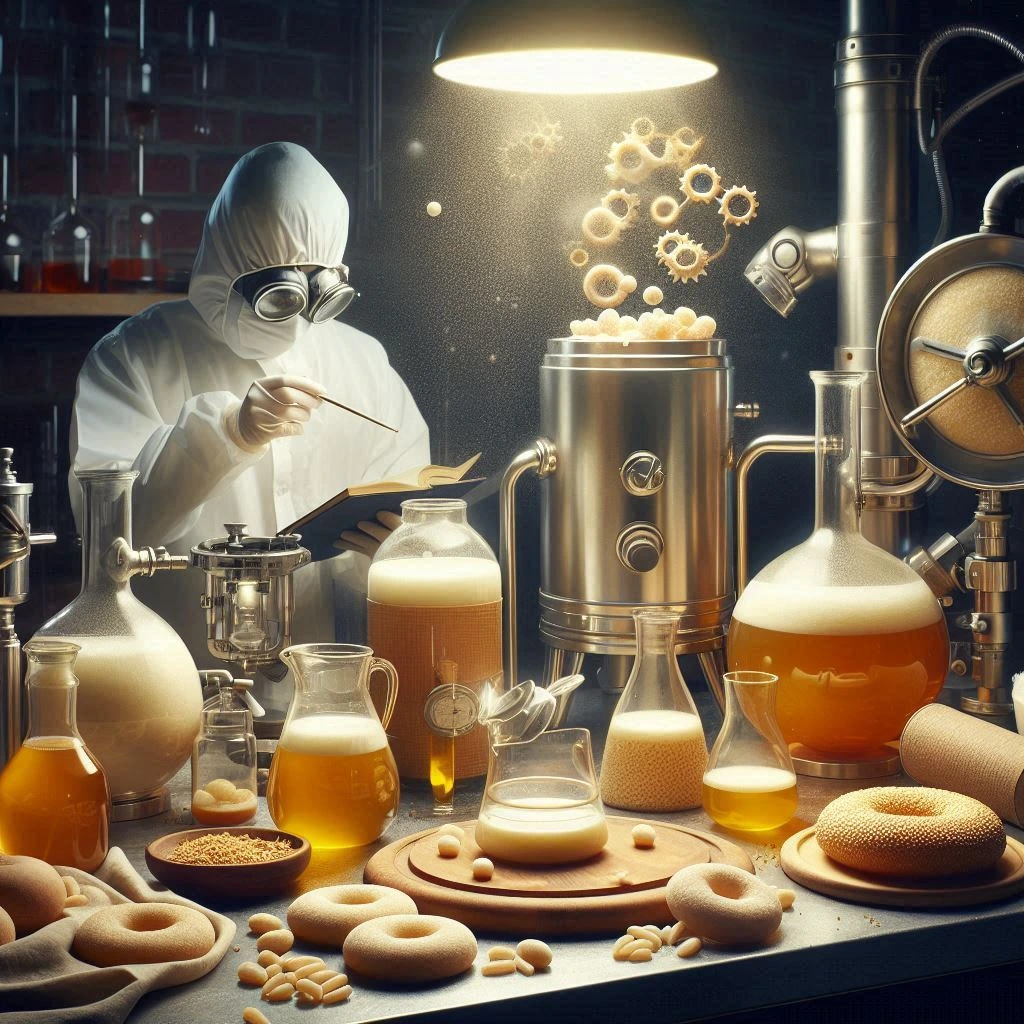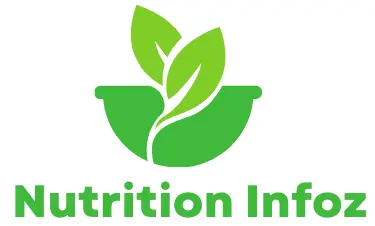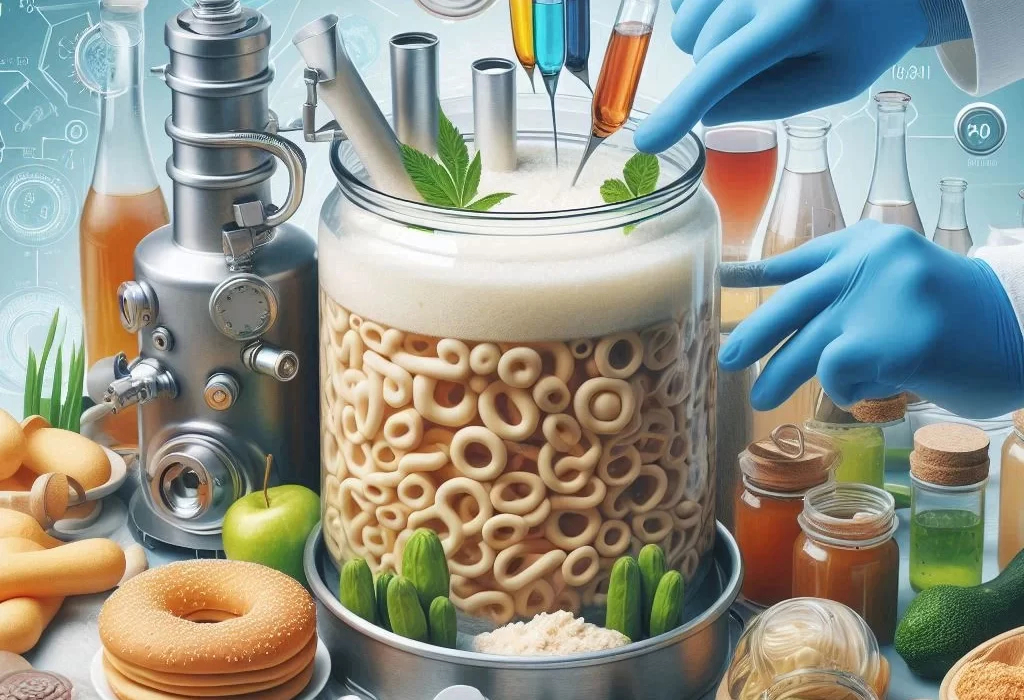Biochemical fermentations are fascinating and historically have provided the essential background upon which many food and beverage products have developed as far back as ancient times. To learn more about the science of fermentation and how it happens, moving on, know about the fermentation process, how yeast fits into it, and various forms of food fermentation used. So if food technology, food health, and nutrition are really about fermentation, why should only people who like food themselves be doing the fermentation? The resulting interactions between organic substances and microorganisms provided by fermentation are beautiful: They can be used to produce yogurt and alcoholic beverages. If you’re a culinary professional, science student, or just someone curious about how our favorite foods make us want to go, read on because this article will give you a great amount of useful information on how fermentation works.
1. What is Fermentation?
When food or organic matter breaks down, it is a biochemical process in which organisms, like yeast and bacteria, break the fermentation. This usually occurs in anaerobic conditions that don’t have oxygen. The first thing is always fermentation to make fermented food, used by ancient societies and evolved into bread and beer. Fermentation has become a key episode in food technology: Better digestibility, preserves food, and provides flavor.
In truth, at its core, fermentation is not a simple chemical reaction — it is a complicated game of microbes and the energy they run on. End products are so many kinds of things, so fermentation, for example, may be responsible for producing a great variety of foods and beverages. Dairy products such as yogurt and yeast fermentation need alcoholic beverages and lactic acid bacteria. Everything you need to know to enjoy the fermentation of the very products we bow down to.
2. How Does Yeast Contribute to Fermentation?
Most of the processes ruled by yeast have been dated this far. In particular, we are looking at a microorganism, Saccharomyces cerevisiae, which takes sugar and turns it into alcohol and carbon dioxide. They aren’t just making alcohol; you can flavor or sense many things in them.
Where the yeast contributes, instead of glycolysis, yeast cells break down sugars and get energy by making ATP. What they are fermenting is, actually, one glucose, and so what they’re forming then is their main derivative of the decomposition of glucose, one being primarily fermentable. This is one of the metabolic pathways used to produce wine and beer. The yeast is also obligatory.
Breadmaking also depends on yeast. Then you have good bread (bubbled [moving] carbon dioxide) yeast that parties receive well. What we want to know is why yeast is fermented.
3. What Are Fermented Foods?
Fermented food that has been fermented and then fermented again to give this food flavor, texture, or health benefit. The foods rich in probiotics are known as probiotics, which maintain gut health and provide good health. All the things are forms of fermented foods: …. any cheese …, sauerkraut, etc, yogurt. Instead, these are fermented with microorganisms that might work with that product.
Both Lactobacillus bulgaricus and Streptococcus thermophilus ferment lactose (milk sugar) to lactic acid, a type of ‘lactic acid’ bacteria used to make yogurt. Another side track is that it makes the milk a bit tangy and much thicker. There is also lactic acid Fermentation of more concern, particularly in Vegetable Fermentation, such as sauerkraut and kimchi, which rock nutrition and flavor.
We know they are good for us, have more digestion, a better immune system, and inflammation — but most people don’t. We know more and more as these fed foods become a more popular placement for people’s modern diets. Preserving food saves energy, and the food is fermented. Fermentation of food helps assist in the intake and digestion of that food in this sense.
4. How Does the Fermentation Process Work?
Fermentation Chemistry is not just a sum of bacteria, microbes, and yeast. This is normally the first step of this process, whereby sugars, such as glucose and fructose, synthesized from many substrates, are broken down. Some are produced by byproducts made by microorganisms, according to the type of fermentation.
In other types of lactic acid fermentation, such as lactic acid bacteria used in preservation, lowering the food’s pH leads to flavor development and makes it a preservative. It does not have the sweet taste that alcoholic fermentation has, and it is almost all done by yeast and releases ethanol and carbon dioxide. Process efficiency and yield of the final product are directly governed by fermentation conditions, i.e., temperature, pH, and availability of (oxygen).
Fermentation in different environments can have various stages, which could be divided by the fermentation condition. These stages, in turn, can change the final product regarding flavor, texture, and nutritional profile. How these stages and conditions occur is crucial for designing food processing or fermentation technology.
5. What Are the Different Types of Fermentation?
These fermentations are grouped according to the microorganism(s) used and by the products formed. Fermentation is DONE commercially, involving alcoholic fermentation, lactic acid fermentation, and acetic acid fermentation.
- Alcoholic Fermentation: This is type 1, which only consists of wine and beer. Here, there are more types of yeast. In this case, sugar is converted into ethanol and carbon dioxide. Take wine as an example. Without specific yeast strains, the wine won’t ferment like we want it to, and the alcohol won’t be at the amount we want it to be.
- Lactic Acid Fermentation: Sugars are also eaten by lactic acid bacteria, which then make lactic acid, the antimicrobial handmaiden, and what makes yogurt, sauerkraut, and kimchi basically, as well as sourdough sour. Such was the importance of preserving and flavoring these foods that ferments of these foods were so important.
- Acetic Acid Fermentation: This is broth conversion of ethanol to acetic acid by acetic acid bacteria. Vinegar needs vitamin B12, which it gets by oxidation of ethanol, which is the acidic bite of vinegar.
- Mixed Acid Fermentation: This type of microorganism includes many microorganisms and, in the company, causes a group of acids, which are lactic acid, acetic acid, and ethanol. It is commonly found in microbial fermentation, where many metabolic pathways from many species are taken on.
- Solid-state fermentation occurs on solid substrates and is often used for enzyme, biofuel, or other fermented food production. Fermentation products can be many, and the concentration of microorganisms is higher.
This is important for food technologists and producers to know because there are certain differences regarding how any particular type of fermentation operates and its application.
6. What Is Alcoholic Fermentation?
Yeast converts sugar into ethanol and carbon dioxide, essentially in alcoholic Fermentation. This is important in beer, wine, and spirit production.
During alcoholic fermentation, yeast cells metabolize sugars using an enzyme-mediated reaction sequence. Glucose is the main molecule split apart so energy can be released. Some of the things we get during fermentation are ethanol and carbon dioxide. Temperature, yeast source, and sugar concentration all play a part in this. An example of this is warmer temperatures promoting faster Fermentation while creating flavors you don’t want.
Other substances, such as organic acids, can inhibit or favor the yeast’s action by their mere presence. One must have such knowledge to finish the Fermentation process and produce the final product as it should be.
7. What Role Do Microorganisms Play in Fermentation?
It occurs because microorganisms act at the molecular, bacteria, and yeast levels. Key aspects of their biological role are metabolic activities in shaping substrates into numerous products. In fermentation, different microorganisms produce different by-products that give fermented foods certain characteristics.
Yeast is important for alcoholic fermentation, particularly in species such as Saccharomyces cerevisiae. While lactic acid bacteria such as Lactobacillus species are important in lactic acid fermentation, in which lactic acid is produced from sugars to improve the preservation and flavor of foods such as yogurt and sauerkraut at the same time.
Yet yeast and lactic acid bacteria are by no means the only microorganisms that ferment; acetic acid bacteria and various molds are among the most important. For example, Penicillium mold is essential to making blue cheese or acetic acid bacteria in vinegar. The effects of Fermentation may be very different depending on which Microorganism is involved and what the fermentation conditions are. Knowledge of these roles is important to achieve high-quality fermented products.
8. How Is Fermentation Used in Food and Beverage Production?
The term used in food and beverage production is fermentation, a natural food and beverage preservation and flavor enhancement process. Production of food products in the food industry, i.e., dairy items, vegetables, and beverages, uses fermentation techniques.
Lacto-bacillus fermentation of milk in yogurt and cheese in dairy production gives a good range of flavors and textures. Fermenting vegetables, as with vegetables themselves, prolongs shelf life, builds a nutritional storehouse, and produces branched flavors — a good source of ‘bench stock’ for fermentation hobbyists.
Fermentation is the bulk of today’s value of alcoholic beverages. But it isn’t only the alcohol that contributes to the body and flavor of wine, beer, and spirits – fermentation remains an important source of complexity at that point, too. It depends on the fermentation process, type of microorganisms applied, and conditions of fermentation, and leads to the determining characteristics of each product.
Unfortunately, however, fermentation has proved itself to be an indispensable process in making food and beverages beyond its ability to provide desirable taste (at least as we know it to be), also through its health-promoting health-promoting potential.
9. What Are the Historical Aspects of Fermentation?
Fermentation has been used since the beginning of humanity (further evidence from several cultures that used, and still use, fermentation for preserving food and making alcoholic beverages). Ancient civilizations, the Egyptians, the Chinese, and the Mesopotamians, used fermentation to make bread, beer, wine, and other things because it can enhance taste and keep perishables from spoiling.
Until the advent of modern refrigeration technologies, traditional or fermented foods were an important item of food preservation. It enabled communities to store food for longer periods during that time when agricultural resources were, all else being equal, scarce. Thus, fermentation increases food shelf life while improving the food’s nutritional profiles, leading to foods that would otherwise have gone bad, benefitting humans.
Louis Pasteur developed fermentation science in the 19th century, especially because he discovered that microorganisms also played a role in fermentation. This research provided the basis of modern fermentation technology that changed how food is processed and the development of a range of fermented products. Pasteur’s work won the Nobel Prize in Chemistry, which split the microbiology and fermentation science fields.
10. Why Is Understanding Fermentation Important Today?
The idea of fermentation is growing popular in today’s food landscape, with more and more consumers becoming more health-conscious and searchingsearching for natural food production methods. Fermentation is very beneficial: it adds more flavor, digests better, and, at least in theory, is probiotic.
Food fermentation is increasingly incorporated into the demand for fermented foods, hence the need for food producers to be tamed by this science to produce quality products. Once we know this, we can develop new technologies that consider consumer preferences to help us make fermented foods and beverages in new ways.
Fermentation is also used to practice sustainable food, like reducing food waste and preserving nutrients in food. Food technologists say fermentation can be used to make food that is more sustainable and nutritious and helps fight global food security. Particularly, the fermentation processes and the use of different microorganisms offer possibilities to develop new means of improving fermentation conditions and the products’ quality and safety.

Key Takeaways
- Fermentation is changing sugars to acids, gases, or alcohol, ordinarily from organisms such as yeast or bacteria.
- They are important in alcoholic fermentation as follows: the production of wine and beer.
- Almost all fermented stuff has probiotics, and gut health has probiotics.
- Fermentation knowledge can be used to optimize food production, improve food flavor, and develop new ways of food preservation.
- Fermentation is important to some of history’s ancient civilizations and how it found a place in modern food production.
- Fermentation remains important as the most suitable way to make nutritious and environmentally friendly alternative foods to meet consumer demand for natural products.
Participating in the research and learning about fermentation will open your eyes to the science of the food you eat, the foods and beverages you ingest, and the role fermentation plays in appropriate food and nutrition.
Satructure of Fermentation
Fermentation is used to make many different types of food and beverage products and, therefore, affirms its place in culinary practice. This is an anaerobic process like fermentation in which microorganisms convert sugars into another product, for instance, into ethanol during ethanol fermentation or into lactic acid during homolactic fermentation. Iterative fermentation of different reaction mixtures is necessary to understand the fermentation process to optimize fermentation and achieve desired results, whereby the response of different stages of fermentation can govern the final products. For example, we see natural fermentation, wherein sugars are metabolized to various products in a way that happens naturally under the right conditions.
Culinary Fermentation
It conditions and the type of microorganisms employed in the process have varying effects on the efficiency of fermentation. it’s foods is commonly conducted in batch fermentation, although solid-state fermentation and submerged fermentation can also be used. Fermentation can improve flavor, texture, and preservation benefits, and fermentation results can also be applied to a broad range of food items. Researchers are now studying the fermentation process to understand new fermentation techniques and to demonstrate that the fermentation process is critical to so many culinary traditions.
Fermentation is one of the main types of bioprocessing as the products produced during the fermentation are integral to modern food production, further showing that fermentation is one of the most powerful motivations for bioprocessing. Fermentation of traditional foods illustrates the cultural importance of fermentation and uses of fermentation technology. Therefore, understanding the relationship between metabolism and fermentation is important in developing better fermentation practices and improving food quality.
Understanding the Recent Bank of America Outage: What You Need to Know
Bioprocessing Fermentation
Fermentation is one of the old processes, and many types of germination have different cultures have been used for many years. Understanding and optimizing the fermentation process is critical to fermentation for producing food and beverages. Fermentation mainly involves alcoholic, lactic acid, and butyrate types, and each can create different fermentation products. For example, we can show fermentation-related pathway diversity using examples such as butyrate fermentation; 1 grain of glucose is fermented into butyrate. Numerous fermentation techniques are used, and how they are done can change the flavor, texture, and nutritional quality. In reality, most of the time, fermentation occurs as the effect of some microorganisms, and the ending result is subject to the conditions under which fermentation comes to be. Controlled fermentation of industrial products is usually controlled to obtain consistently desired products.
By studying how these factors affect fermentation, scientists can develop ways to accelerate fermentation in quality and efficiency to promote the production and quality of fermented goods, an essential part of fermentation in modern food science and technology. history of fermentation, understanding of the fermentation, process fermentation for the production, efficiency of the fermentation process related to the fermentation process, fermentation process may use in fermentation result of fermentation, fermentation can occur, fermentation is a process, fermentation is caused, fermentation to produce, fermentation is a type, products of fermentation, fermentation is the process, fermentation is the process, main types of fermentation, involved in the process, fermentation is commonly,
FAQ
What exactly is the process of fermentation?
Fermentation is a very interesting process (the one by which microorganismsmicroorganisms like yeast and bacteria convert sugars into alcohol or acids). Mrs Miller put it like this: It’s like a small kitchen party for microbes, where they change a molecule of glucose into energy-filled products. The oxygen requirement around with and without oxygen (with oxidation) is unique on the molecular biology scale! Thank this fermentation process, whether it’s the beer you prefer, bread, or even that tangy yogurt.
So, just what does yeast add to the value of wine fermentation?
Yeast is the show’s star, and winemaking was never intended to be a solo act. Grape juice contains sugars yeast nibbles on to create alcohol and carbon dioxide. That is what makes your wine boozy! That’s because the kinds of yeast you put in your wine can make all the difference to the finished wine; even the specific types of yeast you use can emulate the wine’s flavor and aroma.
What’s the deal with spontaneous fermentation?
spontaneous fermentation is a wild card. Rather, fermentation starts with wild yeasts and bacteria in the environment rather than with specific strains. We’re not the only people who love bread and bready flavors, and they come in all places, from other traditional beverages to sourdough bread, and while they’re not for everyone, they come with their good kind of unique flavors, so give them a try
What are the main stages of fermentation?
The process of fermentation typically follows a few key stages: This is initiation, when the yeast begins mowing through the sugars to perform glycolysis; active fermentation, when sugars are turned into alcohol and CO2 rapidly; and maturation, when flavors develop and stabilize. We can craft the best-fermented goodies, beer, bread, or pickles by understanding these fermentation stages.
What are the differences between industrial fermentation processes and home fermentation?
Home fermentation may require small mixing and waiting, but industrial fermentation is a highly controlled, giant-scale fermentation process. They have sophisticated equipment and precision monitoring; they do everything from pharmaceuticals to food products. You’re comparing a home kitchen to an enormous factory: both ferment…. but at different scales and with varying levels of precision.
Why You Should Consider Following a Raw Vegan Diet: Benefits and Risks




Leave feedback about this